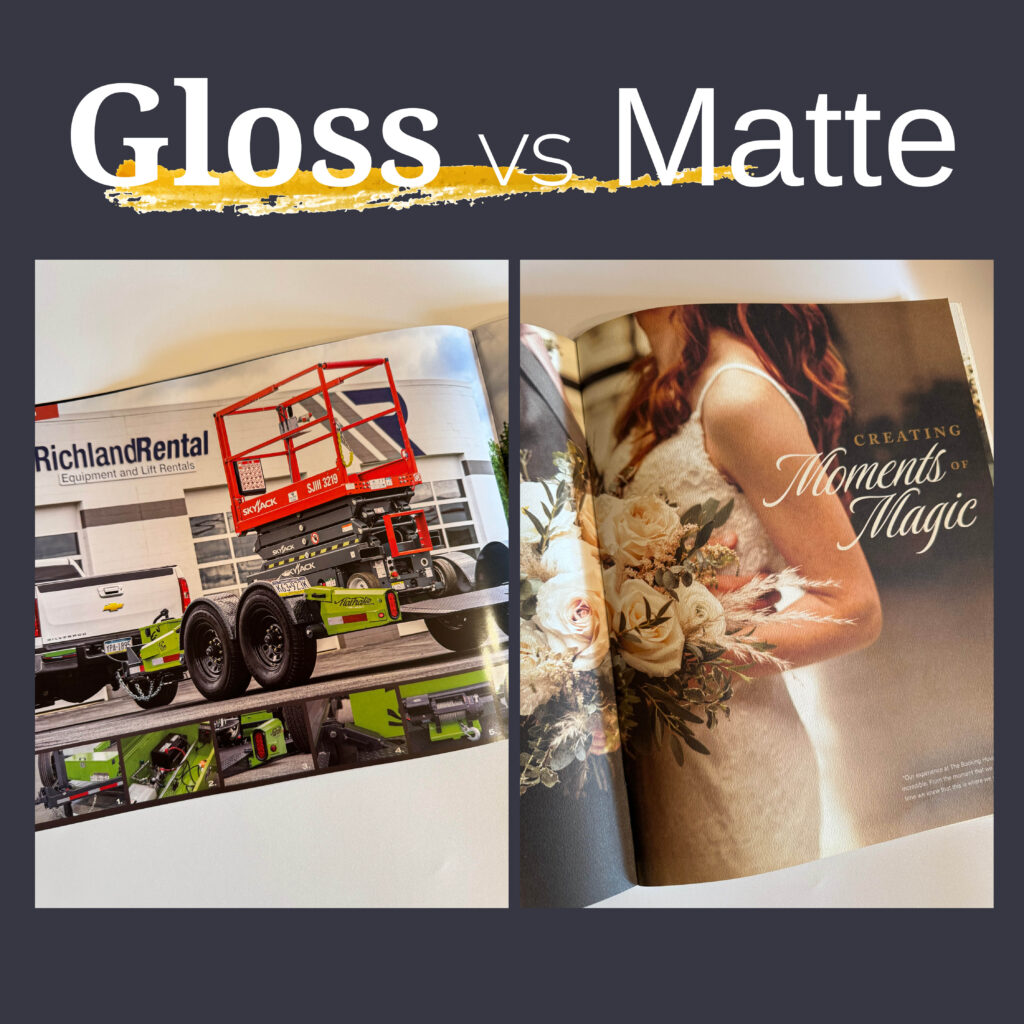
When it comes to print materials, paper finish plays a huge role in how your piece is perceived — and how well it performs. Two of the most popular options are gloss and matte paper. But what’s the difference, and when should you use one over the other?
Let’s break down the benefits of each to help you make the best choice for your next printed piece.
How Paper Finishes Are Made
Paper mills manufacture a wide assortment of paper stocks. Some varieties are left uncoated, allowing the paper to retain its natural rough texture, which comes from the cellulose fibers derived from wood. This gives uncoated paper a more organic, tactile feel.
Other papers receive a coating at the mill — a process that fills in some of that natural roughness. The more coating that’s applied, the smoother and more reflective the paper becomes. This process is what gives us the distinctive matte and gloss finishes commonly used in professional printing.
Matte paper and Gloss paper are both coated stocks. The difference between the two lies in the amount of coating the paper has received at the mill. Paper that exhibits a Matte finish has received considerably less coating than paper that has a Gloss finish.
Gloss Paper: Bold, Vibrant, and Eye-Catching
Gloss paper has a shiny, reflective finish that enhances color and sharpness. It’s coated to reflect light, which makes colors appear more vivid and details pop off the page. When your piece is visual and you want it to stand out, gloss is a smart choice. It draws attention and gives a premium, polished feel.
Matte Paper: Elegant, Understated, and Easy to Read
Matte paper has a non-reflective, smooth finish that feels soft to the touch. It diffuses light instead of reflecting it, giving your print a more subtle and refined look. When clarity, elegance, or a tactile experience matters more than shine, matte is your go-to. Paper treated with a matte coating maintains a slight texture that adds a softer, premium feel to printed pieces. The texture of Matte coated paper also adds a slight grip to printed pieces and helps to minimize visible fingerprints. These traits are particularly beneficial for printed pieces that will be subject to frequent handling.
So Which Should You Choose?
| Use Case | Recommended Finish |
|---|---|
| Product catalog | Gloss |
| Luxury brand brochure | Matte |
| Business cards | Either (Gloss for pop, Matte for texture) |
| Photography postcard | Gloss |
| Event invitation | Matte |
| Form or handout | Matte |
In addition to the Matte and Gloss coatings that are added during the paper manufacturing process, there are also Matte and Gloss coatings that can be applied after the printing press has laid the ink down. These coatings provide an additional layer to amplify the Matte or Gloss effect.
Applied as a topcoat, these coatings include varnishes, aqueous coatings, UV coatings, and laminates.
At Executive Printing, we work with you to choose the perfect paper and finish for your project — balancing design, durability, and feel. Whether you’re printing marketing materials, packaging, or something totally custom, we’ll make sure it looks and feels just right.
Let’s bring your vision to life — on paper that makes it shine. Or feel just right.
Contact us today — to talk paper options!
